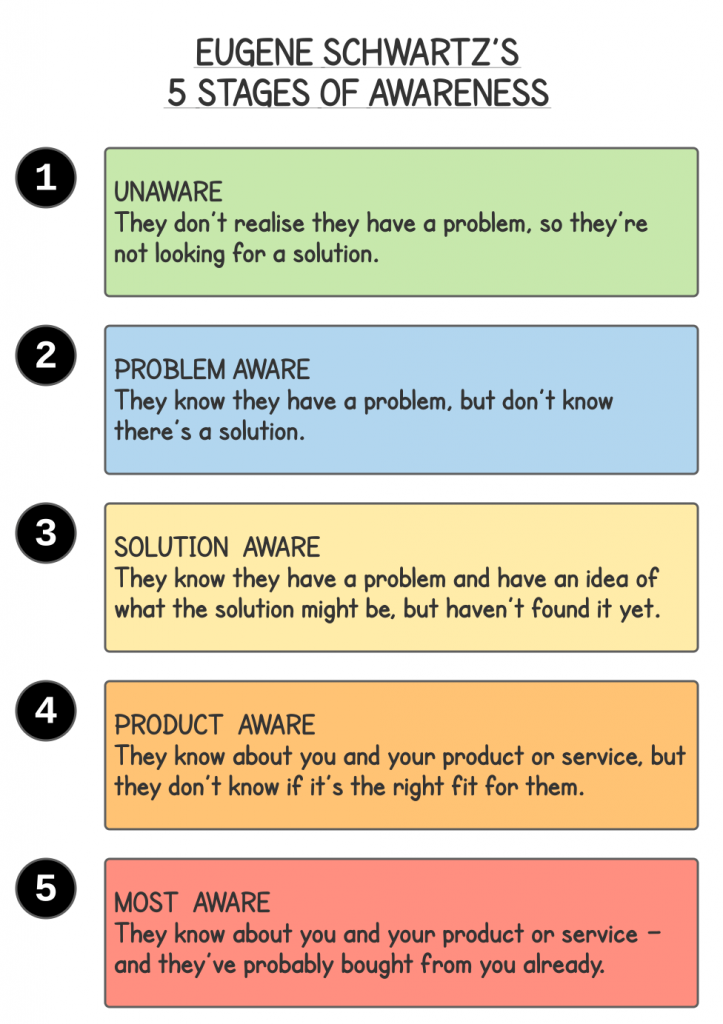UPDATED JULY 16, 2024
Your website is primarily a sales tool
Your website can do many things for your business. But the main role of an effective, search-engine-optimised website is to attract your ideal prospects and convert them into paying customers.
Your web copy, therefore, should be talking to your — and I can’t believe I’m about to write this — low-hanging fruit. Ugh! *falls into a pit of self-loathing*
Why some websites fail to sell
Some websites fail to sell because the copy isn’t focused on selling.
These websites don’t know who they’re talking to, so they try to be all things to all people.
They waste time explaining the basics and giving information their audience doesn’t need — when what they should be doing is keeping it simple and getting to the point. And this starts with knowing who you’re talking to.
If your website has been optimised for search intent, the visitors you’re getting should be interested in what your business has to offer them.
Your website has one audience
The most persuasive copy is sharp and focused. It’s written so it sounds like you’re talking to one person: someone you know and understand well.
This is someone who’s already done their research and who’s reached a high stage of awareness. They know they have a problem, they know what the solution is — and they know you’re offering that solution.
They’re ready to buy. They just need to be persuaded to buy from you.
Think of it this way: your prospect has already climbed to the top of the diving board. You now need to persuade them to take the plunge.

But how did they get to the top of the diving board?
Prospects typically go through several stages of awareness before they get to the point of being ready to buy. Eugene Schwartz identified the following five stages:

It usually starts with them realising they have a problem and looking up their problem online.
This will lead them to content that will explain the problem in more detail, teach them the terminology they need, and introduce them to some possible solutions.
Through consuming content, they’ll learn more about the available solutions, what they need more specifically and where they can find it.
An effective SEO website will also provide this content on its blog.
The two sides of an effective SEO website
An effective search-engine-optimised website has two sides: the main website and the blog.

The main website will have a number of static pages, while the blog is ever-changing with content continually being added and updated. An established service-based website can have many more blog pages than web pages.
There can be a lot of interplay between the website and the blog, but, essentially, the blog allows the web copy to ‘breathe’. It takes care of all the heavy detail so the web copy can focus on selling.
What about prospects who need more information?
There’s still a possibility that some prospects will read your website and find something unfamiliar they want to look into and learn more about.
You can pre-empt this by linking to the relevant blog content direct from the appropriate spot on your web page.
Set the blog link to open in a new tab, so they don’t lose their place. And, as a backup, make sure the blog article includes a suitable call to action (CTA) that keeps them engaged and on your website.
Web copy versus blog content
So what should be web copy and what should be blog content?
What your web copy shouldn’t be doing
Your web copy shouldn’t be littered with extraneous and unnecessary content that will detract and distract from your sales message.
For example, it shouldn’t be:
Explaining everything
Explainer content is typically for the people at the beginning of the buyer journey. It should definitely be covered on your blog — but not in your web copy.
Your prospects don’t need it because they’re already up to speed.
Using explainer content on your website will interrupt the flow of your copy and stifle your sales message.
Dwelling on the pain points
Pain points can appear in your blog content, for problem aware prospects. And, briefly, in your web copy as a means of persuasion.
I say briefly, because when you spend too long discussing your prospects’ pain points, there comes a point where it feels like you’re commiserating with them rather than offering them a way out.
And that’s not why they came to you.
Your prospects already know what their problems are. They came to you for help and you need to make sure that’s what they’re getting.
There’s nothing wrong with showing you understand your audience’s pain points. But they should be something you touch on rather than dwell on.
Persuading prospects to do a 180
It’s possible to write content that challenges preconceptions and makes people think differently. But this is absolutely, definitely and unequivocally blog content.
The prospects you’re targeting on your website will already know that what you’re offering is the right thing for them.
You don’t need to convince them of that or try to change their minds. And doing so will only weaken your sales message.
What your website copy should be doing
Your web copy should be answering the question, why you?
Why should your prospects choose to work with/buy from you and not your competitors?
So, for example, it should be:
Outlining your value proposition
Your value proposition is a simple statement that explains the specific combination of benefits you offer. It should answer the question of why your prospects should specifically buy from you.
Defining your USP
Your USP is your Unique Selling Point. It’s the thing that makes your business unique and different to your competitors.
Detailing what you’re offering
Give details of what you’re offering your prospects so they can see the benefits and decide if it’s the right match for what they need.
What your blog content should be doing
Your content can still be working for you — even at this late stage in the buyer journey — when your prospects are almost ready to take the plunge.
For example, with:
Pricing content
Content that discusses your pricing, including:
- How much you charge
- How your charges are calculated
- Why you’re so expensive
- What value you’re giving
- Terms and payment plans.
Working with you content
Content that talks about what it’s like to work with you, including:
- What prospects can expect
- Who you do and don’t work with
- Your process and how you work
- What you’ll need from your prospects
- Good reasons to work with you/not to work with you.
Do you need a website copy refresh?
Hi, I’m Jenny Lucas, a website copywriter and SEO specialist with more than 14 years’ experience in writing websites that rank well on Google and convert prospects into paying customers. That’s me on the left.

When I’m not copywriting solo, you’ll find me dream-teaming with my copywriting co-star, Gillian Jones. You can see Gillian on the right. She’s a certified conversion copywriter who’s an expert in nailing those sales.
Together we’re bringing you an amazing website copywriting offer featuring five pages of SEO-optimised conversion copy for one, all-in price.
Full details of the offer and to register your interest >>
You might also like…



